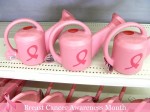NOTEWORTHY WEDNESDAY!

Yesterday there was so much in the news about children and x-rays, in particular CAT scans.
The news ‘teasers’ kept repeating that ‘CAT scans for children may be doing more harm than good”
Scary….right?
Well, I want to post what I found related to this news so that parents can make the correct decisions for their children without all the fear.
First, here is what the news reported:
“Number Of Children Receiving CT Scans At EDs (Emergency Departments) Increases Fivefold From 1999.
The CBS Evening News (4/5, story 5, 2:35, Smith) reported, “Radiation is used in CT scans everyday and a study out today says more American children are getting them in the ER, especially for stomach problems and head injuries than ever before.” On NBC Nightly News (4/5, story 9, 2:15, Williams) lead study author, Dr. David Larson from Cincinnati Children’s Hospital was shown saying, “What we found was from 1995 to 2008 the number of CT scans that were done in children who visited the ED increased fivefold.”
Yes, this is true and surely some of these scans and x-rays may not have been totally indicated and yes ‘gently imaging’ techniques may not have been used properly depending on the facility where the scans were performed.
First…lets define safety:
“Definition of Safety: Safety involves the processes and strategies to avoid or minimize unnecessary risk to the patient. “First, do no harm.”
via The Society for Pediatric Radiology: Safety.”
via ACR Daily News Scan.
Safety is of concern whenever children are exposed to radiation through x-rays.
As parents what do you need to know about x-rays and kids?
You need to know this: Radiologist have established protocols when it comes to pediatric x-rays…there is a recommdation referred to as ‘image gently’. This means use the least amount of radiation to accomplish the appropriate scan or x-ray.
You need to also know:
“Fluoroscopic procedures help us save kids’ lives!
But, when we image patients, radiation matters!
Children are more sensitive to radiation.
What we do now lasts their lifetimes
Image kids with care:
Pause and child-size the technique
use the lowest Pulse rate possible.
Consider ultrasound or MRI when possible.”
via image gently.
In addition to the above, parents need to be their child’s advocate when it comes to pediatric medical care.
“Helpful to both care-providers and parents: tracking the number of radiologic studies children are exposed to helps inform treating physicians of recent similar exams, helping them to decide if exams are necessary. Tracking the number of exams and location where the images are stored can be helpful in alerting families and their care providers to the issue of radiation safety.
Similar to an immunization record, use your choice of record size to record where and when a study was performed. This is particularly important when medical care is provided by a variety of physicians/ emergency rooms/ hospitals and can help decrease the number of repetitive exams.
via image gently
When faced with a pediatric medical situation parents need ask questions and get answers that they understand. If you are in a serious emergency with your child ask for the social worker or nurse manager to help you understand more clearly what is happening.
One thing you do not want to do is impede your child’s treatment but what you definitely want is to be an educated consumer of the medical care that is being recommended for your precious child.
I hope this post was helpful…





